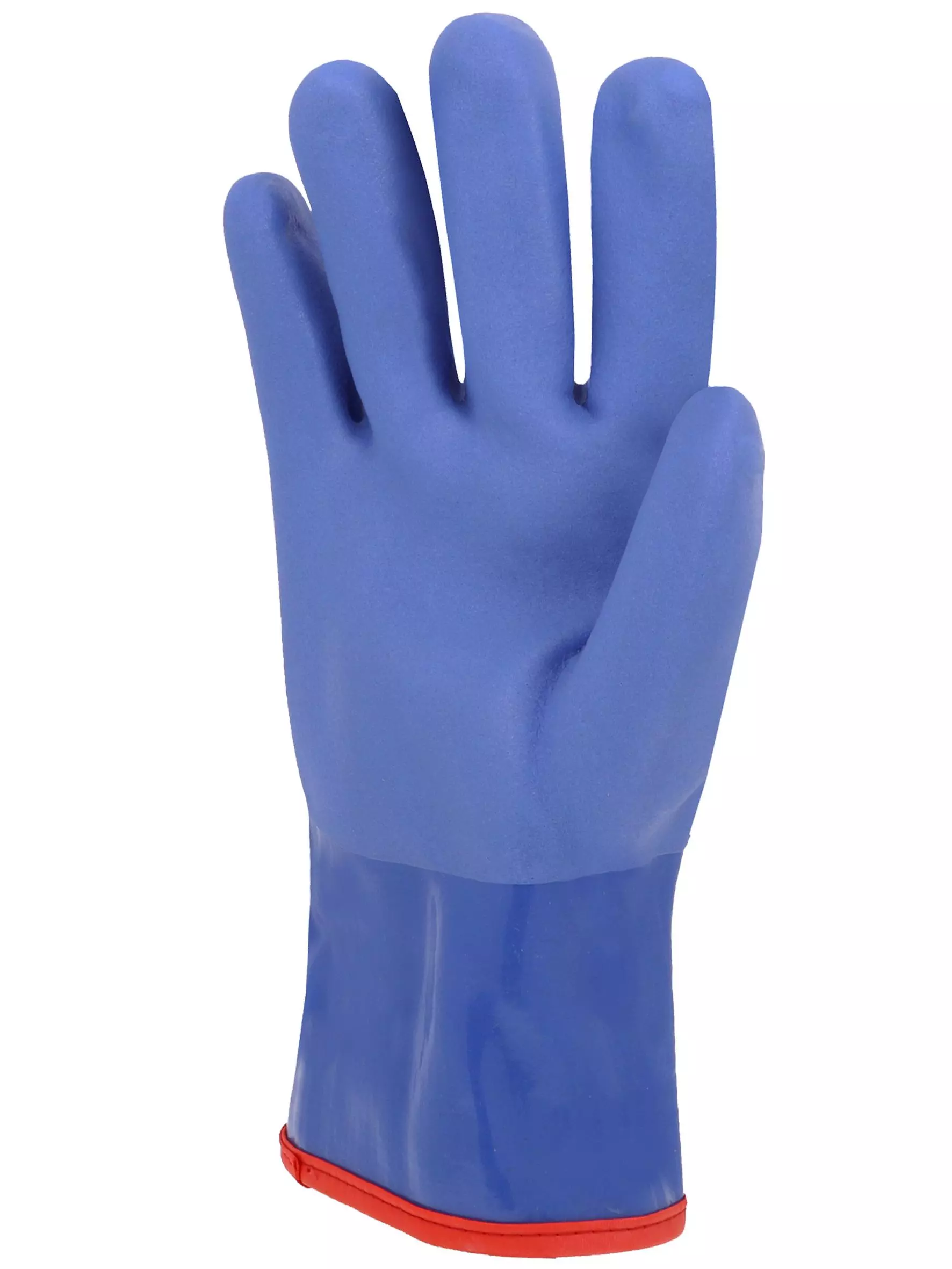


Features You'll Love

Cuff Style · Open
Determines how the glove secures around the wrist, affecting fit, protection from debris, and ease of putting gloves on and taking them off.

EN 388 · Puncture Resistance Level 1, Abrasion Resistance Level 4, Tear Resistance Level 3
Provides basic protection against punctures from blunt objects like splinters, not sharp points like needles.
Offers the highest level of protection against intense rubbing and wear from rough materials.
Offers strong resistance against ripping, making the material durable against snags and tears.

EN 511 · Cold Contact Level 2, Water Tightness Level 1
This glove provides good insulation when directly handling cold objects for a moderate duration. It's ideal for tasks like working in cold stores or handling chilled or frozen items, offering a solid mid-range of thermal protection.
This product provides protection against water penetration, keeping your hands dry in wet conditions. It has passed a test where the glove is submerged in water for 30 minutes without any water leaking through.
Singer Safety
PVC Coated Gloves, 10 pairs
PVC Coated Gloves, 10 pairs
5 / 5
103,01 €
Price per 10 pairs
10,30 € / pair
Choose size
Free delivery
Features You'll Love

Cuff Style · Open
Determines how the glove secures around the wrist, affecting fit, protection from debris, and ease of putting gloves on and taking them off.

EN 388 · Puncture Resistance Level 1, Abrasion Resistance Level 4, Tear Resistance Level 3
Provides basic protection against punctures from blunt objects like splinters, not sharp points like needles.
Offers the highest level of protection against intense rubbing and wear from rough materials.
Offers strong resistance against ripping, making the material durable against snags and tears.

EN 511 · Cold Contact Level 2, Water Tightness Level 1
This glove provides good insulation when directly handling cold objects for a moderate duration. It's ideal for tasks like working in cold stores or handling chilled or frozen items, offering a solid mid-range of thermal protection.
This product provides protection against water penetration, keeping your hands dry in wet conditions. It has passed a test where the glove is submerged in water for 30 minutes without any water leaking through.
Product description
These protective gloves feature a triple PVC coating designed for superior chemical and mechanical resistance in demanding environments. The gloves combine a seamless cotton liner with a removable acrylic and wool insert that provides thermal protection down to -20°C. The sandy finish on palm and back ensures excellent grip in wet, dry, oily, and solvent conditions, while the Sanitized® antibacterial treatment prevents odors and cross-contamination.
Product Features:
- Triple PVC coating for excellent chemical resistance against corrosive chemicals, oils, and greases
- Removable acrylic/wool lining for thermal insulation and comfort
- Sandy finish on palm and back for enhanced grip in various conditions
- Seamless knitted cotton liner for comfort and dexterity
- Sanitized® antibacterial treatment for hygiene protection
- Straight edge wrist with piping
Technical Details:
- Thickness: 4.50 mm (average value) with lining
- Triple coating: fully coated PVC with smooth cuff and sandy palm/back finish
- Cold protection down to -20°C with removable thermal insert
- Type A chemical protection (AKLMNOPT)
Standards:
- EN ISO 21420:2020 (General requirements)
- EN 388:2016+A1:2018 (4131X) for mechanical protection
- EN ISO 374-1:2016+A1:2018 Type A for chemical protection
- EN 511:2006 (121) for cold protection
- EN ISO 374-5:2016 for protection against micro-organisms
Recommended Applications:
- Chemical industry
- Heavy industry
- Light industry
- Agriculture
- Maintenance
EAN: 3660514067783, 3660514067790
